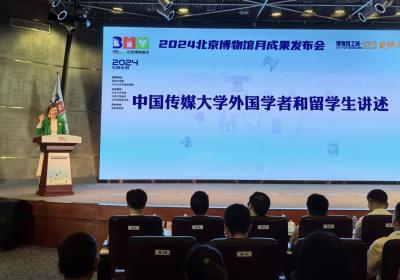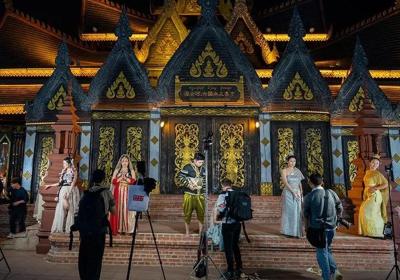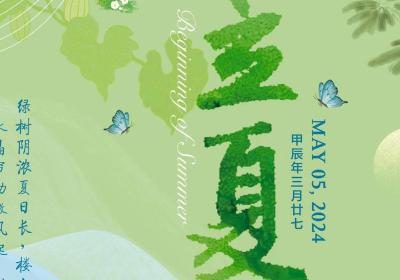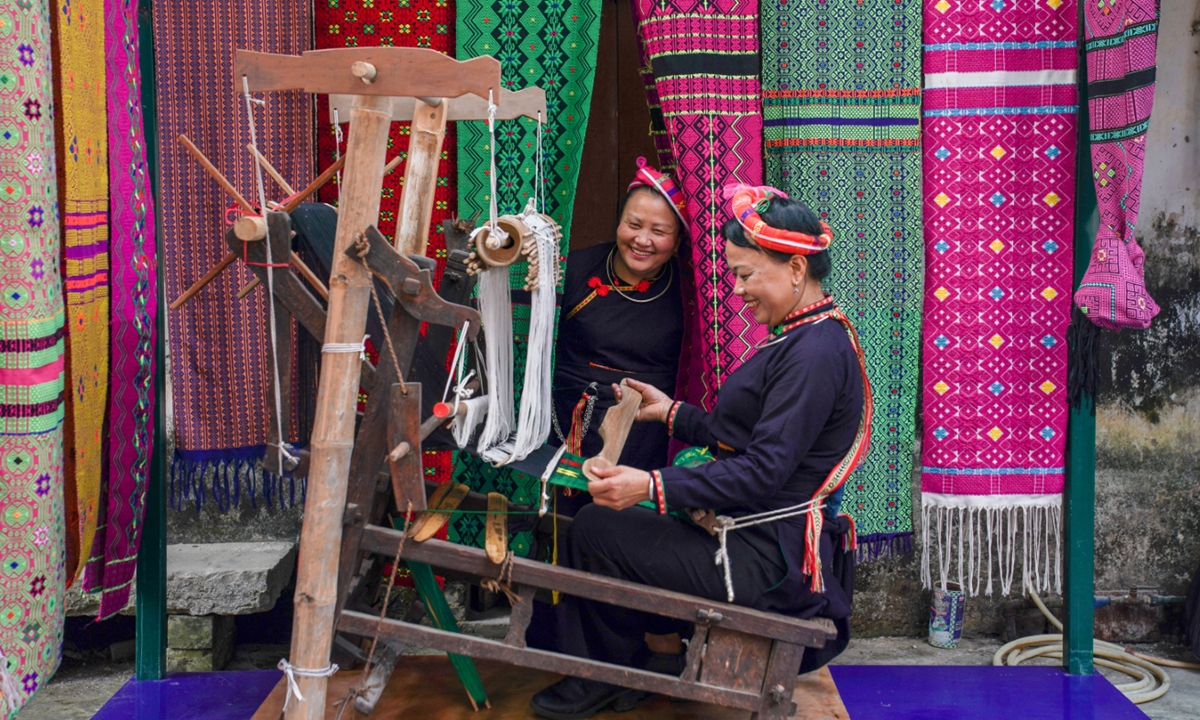
Women weave ethnic Zhuang brocade. Photo: VCG
Over 2,500 kilometers away from Beijing, South China's Guangxi Zhuang Autonomous Region is considered one of the most diverse regions ethnically. Forms of cultural heritage, represented by ethnic Zhuang brocade, are the essence of Zhuang people's millennia-old craftsmanship and unique aesthetics.
Those forms of living intangible cultural heritage, including ones in Guangxi, have been inscribed in the list of state-level intangible cultural heritage since it was approved by the State Council as early as 2006. But how can they break barriers in shifting from simple heritage to art's commercialization? This has been the main concern of Wei Zhaohui, secretary-general of the China-ASEAN Expo Secretariat, over the years.
A member of the Standing Committee of the 14th National Committee of the Chinese People's Political Consultative Conference (CPPCC), Wei proposed to establish the China-ASEAN Cross-border Supply Chain System and facilitate business travel for foreign individuals during the two sessions. But what she values at the same time is the innovation of the living heritage produced by the Guangxi artists, from whom she brought a Zhuang brocade-style handbag to the two sessions.
"This is a new achievement for Guangxi's intangible cultural heritage innovation. It was independently launched by local designers trained through years of exchanges between Guangxi and Italy. It not only uses the Zhuang brocade technique, one of China's four famous brocades, but also adds Zhuang-style patterns to it," said Wei.
As far back as the Song Dynasty (960-1279), the ethnic Zhuang-style brocade characterized by rich texture and colorfully woven patterns came into being. Produced by traditional handloom weaving technique, those artworks have been reserved for special occasions, such as weddings, festivals, and important ceremonies.
"When you walk along the streets in Guilin, you'd be attracted by all kinds of products such as aprons and bags made from the well-woven Zhuang brocade," a Zhengzhou-based tourist surnamed Li who just got back from Guilin, Guangxi, told the Global times on Monday.
Craftsmanship breakthrough
For decades, brocade craftsmanship has been inherited by the locals who sell the products as souvenirs at local scenic spots. But local business insiders and inheritors expect even more.
Taking Zhuang brocade as an example, mass production has been achieved since automation was introduced to the factory.
"When the brocade was purely woven by hand, even the skillful masters could not weave more than one meter in a day. But now, those once 'high-end' products are also available for customers worldwide. At the same time, the improved materials make the fabric both delicate,wear-resistant and durable," said Wei.
Now such a technique is breaking free from the confines of traditional use. No longer limited to clothing, it now adorns everything from handbags to accessories, iPad cases, and even document holders available both online and offline.
"This marks a breakthrough in the limitation of cultural souvenirs. By blending traditional elements with modern craftsmanship, these commercialized products paved the way for both domestic and even international markets," Beijing-based tourism and travel expert Xu Xi'ao told the Global Times.
Since 2023, efforts have been underway to showcase high-end ethnic heritage products on international platforms like the China-ASEAN Expo.
"We've been bringing Zhuang brocade to international platforms to display its excellence," said Wei. "Moreover, Zhuang brocade is extending its reach to countries like Laos through technical assistance programs, integrating Southeast Asian weaving and embroidery elements, thus further facilitating international market penetration."
Some Zhuang brocade manufacturers have now begun supplying European fashion brands. "Though we haven't established our brand yet, I don't see it as contradictory as we're exploring the market through collaboration."
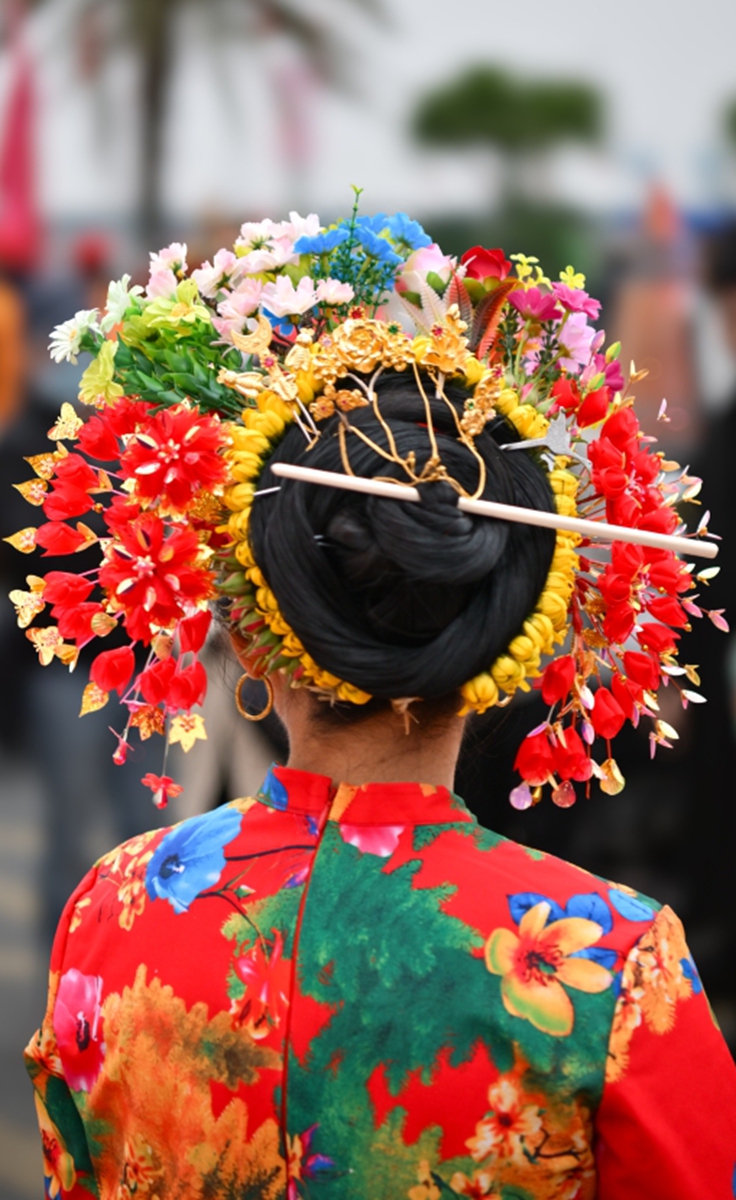
A woman wears a glass flower tiara. Photo: VCG
Boosted by social mediaThe global path for the Zhuang brocade may not be suitable for all traditional arts in China. In terms of another national-level intangible cultural heritage in Quanzhou, East China's Fujian Province, the combination of social media and "tourism plus culture experience" has also paved the way for heritage revitalization.
A glass-made flower crown recently captured the attention of netizens on social media platforms. The video showcases how a glass flower tiara, the form of cultural heritage born in Quanzhou, garnered 3.5 million views as of Thursday.
The creator Chen Mo introduced in a video that this glass flower tiara took her over a month to assemble. The tiara comprises over 300 glass pieces arranged to form nearly 100 flowers.
Chen's inspiration came from the recent viral fame of Quanzhou's Xunpu village thanks to the photos featuring similar flower tiaras of the popular Chinese actress Zhao Liying, giving a surge of attention to the village since the end of 2023.
During the 2024 Spring Festival, Xunpu village witnessed a peak influx of over 50,000 visitors. Despite the diversity in attire, visitors adorned a common accessory - the flower tiaras. For a fee ranging from 200 to 400 yuan ($27-$55), tourists could capture a set of enchanting photos wearing these floral tiaras taken by professional photographers.
According to Huang Chen, a local intangible cultural heritage inheritor from Xunpu, for hundreds of years, those tiaras were made by women who would queue at the market to purchase fresh flowers every morning.
The allure of the flower tiara experience has sparked a booming trend in experiential economy photography, thus becoming another source of income for the villagers.
"A flower tiara costs as little as 40 yuan. However, the prices vary due to differences in photographers and makeup artists," revealed a local flower tiara shop owner.



